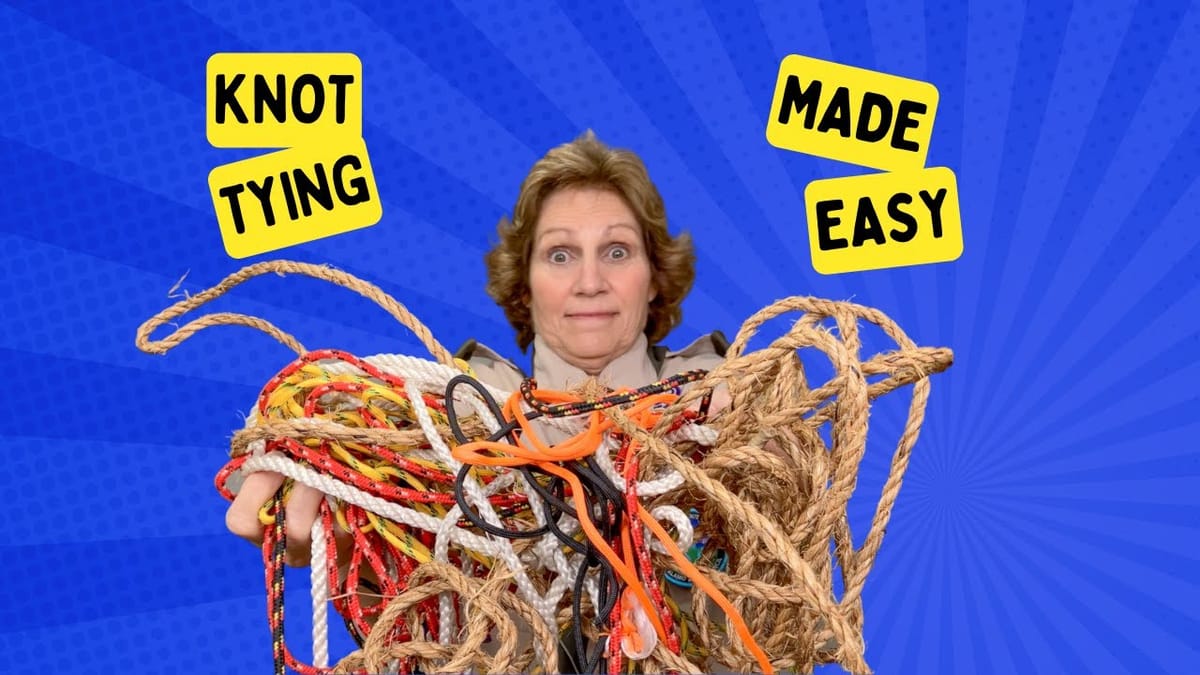Learning Knots: A Scout's Guide to Practical Skills


Hey there, Scouters! Today, let's dive into the world of knots. Why, you may ask? Well, knots aren't just about tying ropes; they're about gaining strength, courage, and confidence, as Eleanor Roosevelt wisely noted. So, let's embark on this knot-tying journey together!
First off, let's address the question many Scouts ponder: Why knots? Knots are not only a requirement for advancing in rank but also incredibly useful in everyday life. From setting up a clothesline at summer camp to securing gear during outdoor adventures, knots come in handy more often than you might think.
Now, let's break down some essential knots, starting with those required for the Scout rank:
- Square Knot: This versatile knot is perfect for joining two ropes of the same diameter. It's simple to tie and forms a secure bond. Remember, right over left, then left over right!
- Two-Half Hitches: Ideal for securing a line to a stationary object, two half hitches provide reliable support. Make sure to tighten them properly for maximum effectiveness.
- Taut Line Hitch: Need to adjust the tension on a line? The taut line hitch is your go-to. It's excellent for clotheslines and tents, allowing you to tighten or loosen the line as needed.
As you practice these knots, remember the importance of repetition and patience. Learning knots is like mastering any skill—it takes time and practice.
Moving on to the Tenderfoot rank, you'll encounter the Square Knot, Two Half Hitches, and Taut Line Hitch again. This time, you'll need to demonstrate their practical uses—a valuable opportunity to showcase your knot-tying prowess!
Now, let's tackle the knots required for the Second Class rank:
- Sheet Bend: This knot is a lifesaver when you need to join ropes of different diameters. It's strong, reliable, and perfect for various outdoor tasks.
- Bowline Knot: Often referred to as the "rescue knot," the bowline creates a secure loop that won't cinch down, making it ideal for rescue operations and other situations where safety is paramount.
Lastly, for the First Class rank, you'll master the Timber Hitch and Clove Hitch:
- Timber Hitch: If you ever find yourself needing to drag a heavy log or timber, the timber hitch is your best friend. Its simple yet effective design makes it a must-have for outdoor enthusiasts.
- Clove Hitch: This knot is the starting point for lashings, making it essential for constructing shelters, tripods, and other structures in the wilderness.
As you practice and perfect each knot, remember the words of Eleanor Roosevelt: "You gain strength, courage, and confidence by every experience in which you really stop to look fear in the face." So, embrace the challenge, face your fears, and become a knot-tying master!
And there you have it, Scouters! Knot-tying may seem daunting at first, but with determination and practice, you'll soon be tying knots like a pro. So, grab your ropes, head outdoors, and let the knot-tying adventures begin!
If you found this guide helpful, head over to the YouTube channel, @scoutingamerica1910 for more Scout-approved content. Until next time, happy knot-tying!
